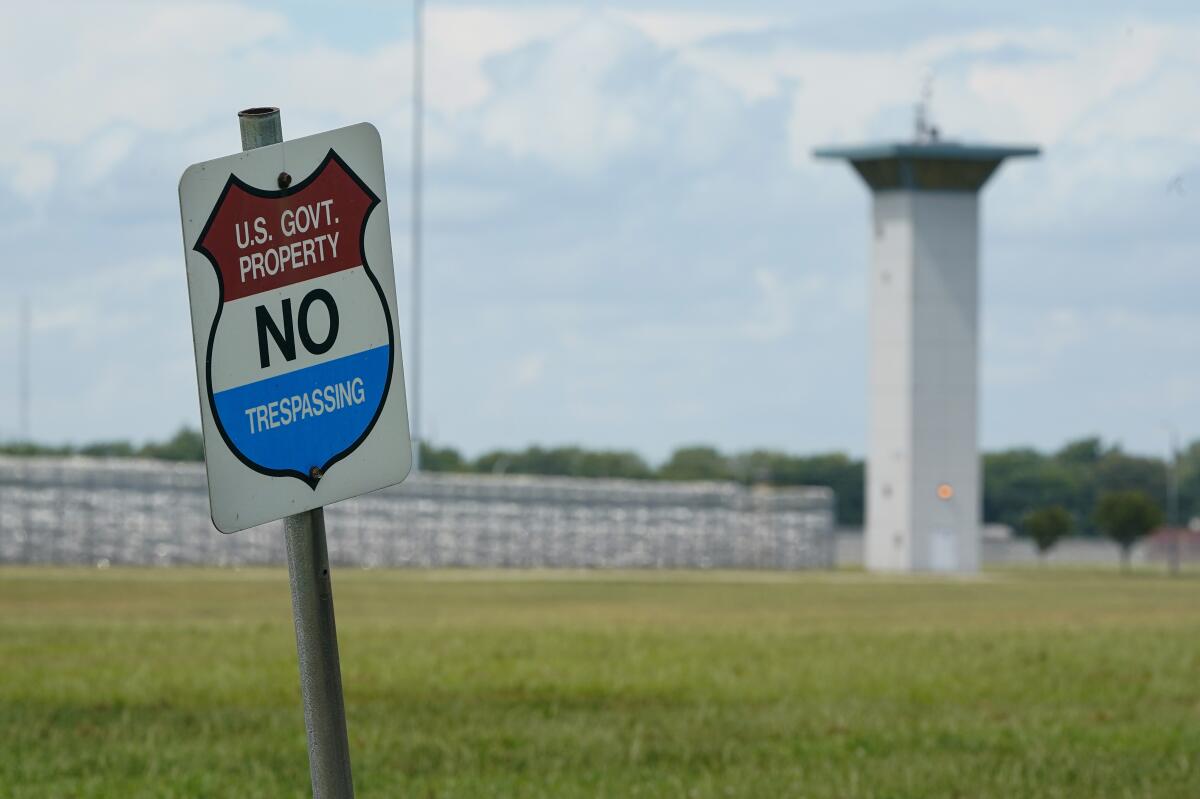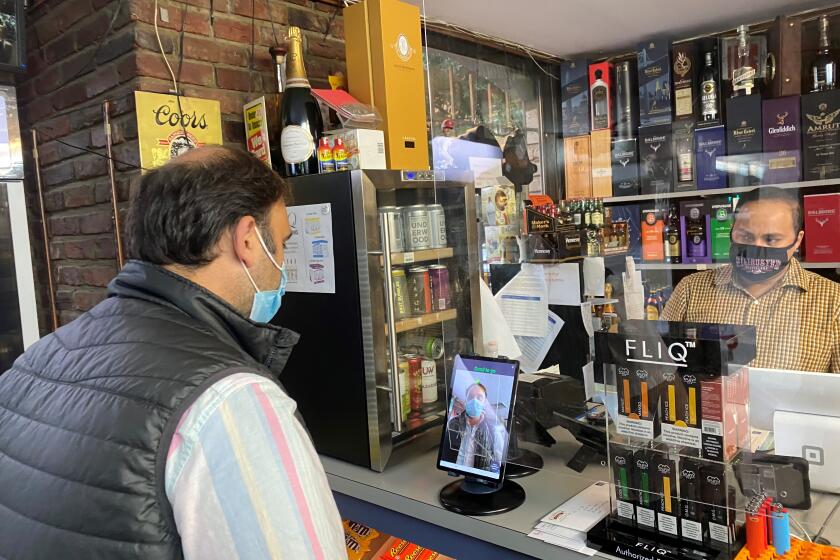Amid COVID closures, executions in 2020 dropped to lowest level in 30 years

- Share via
Even as more than 300,000 people in the U.S. have succumbed to the COVID-19 virus this year, death has taken a relative holiday in the nation’s execution chambers due to pandemic-related shutdowns.
The Death Penalty Information Center’s annual report, released Wednesday, counts 17 executions nationwide this year, with no more scheduled until early January.
As the Times editorial board noted last week, that tally would be even lower — only seven executions — were it not for Atty. Gen. William Barr’s decision to revive the federal “machinery of death,” in Supreme Court Justice Harry A. Blackmun’s famous description, and kill 10 people over a span of five months.
Despite Barr’s execution spree, 17 executions is the lowest number in three decades, down from a peak of 98 in 1999. Without the federal executions, it would have been the lowest number since 1982.
A new app by RealNetworks can tell when you’re not wearing a mask or wearing it wrong. It can also gather data to help policymakers refine their coronavirus policies.
Regardless of the number, the unjust and inhumane nature of capital punishment remains unchanged.
“Executions and new death sentences in 2020 continued to be directed at defendants and prisoners who were the most vulnerable or who had the most defective court process,” the report said. “Every prisoner executed in 2020 had one or more significant mental or emotional impairments (mental illness, intellectual disability, brain damage, or chronic trauma) or was under age 21 at the time of the crime for which he was executed.”
Further, several prisoners were executed while their “more culpable co-defendants received lesser sentences.” One went to his death after being “denied potentially exculpatory DNA testing.” And five people were exonerated.
“In each of the five cases, prosecutorial misconduct had contributed to the wrongful conviction,” the report said. “The men exonerated this year spent between 14 and 37 years awaiting exoneration. Three of them faced multiple trials, despite evidence of their innocence, and one — Curtis Flowers — was tried six times for the same crime.”
The many problems with capital punishment are irreconcilable. Because it relies on the actions of people, it is susceptible to human failure. Witnesses lie or are mistaken. Investigators and prosecutors let zealotry — and often racism — influence their actions, sometimes intentionally, sometime not. But the end is the same: an innocent person condemned to death.

And sometimes after decades the justice system figures out an injustice has occurred. Often it doesn’t. In separate reports, the Death Penalty Information Center has counted at least 17 people who have been executed since 1976 despite significant questions about their guilt.
And a 2014 study published by the Proceedings of the National Academy of Sciences estimated that at least 4% of people on death row are innocent of the crimes for which they were convicted. That accounts for more than 100 of the nearly 2,600 people currently on death row.
The monetary toll of executions is high as well, costing taxpayers billions of dollars. Capital murder trials are more expensive than other murder trials. The appeals process is more costly, and its lengthy delays abuse human rights, according to the Inter-American Commission on Human Rights.
It’s important to recognize that the fight to abolish capital punishment is not an argument to somehow diminish the lives of the victims or the pain and anger of the survivors. Heinous crimes are committed against often defenseless people, and often involve horrendous acts of depravity. Those losses are real and unrecoverable, and the pain and grief never fully goes away.
The question is what to do with the perpetrators. Yes, the guilty ought to be held to account, and society must be protected. But the U.S. remains a global outlier in clinging to the notion that the killing of one person deserves the killing of another.
The Supreme Court spares Texas a deserved scolding for wasting its time.
Killing is not the solution. It is morally wrong, whether it is committed by a person or a government (and executions are carried out by people). The process is too fallible to be relied on for a life-or-death decision and too dependent on the differing approaches of local prosecutors. It does not deter others from killing (were that the case, our homicide rates would not be so high), and an execution that comes long after the crime itself “serves no penological purpose.”
More and more people are coming to see the injustice and unreliability. Public opinion has moved steadily in recent years away from support for the death penalty in favor of life sentences, driven in part by heightened awareness of wrongful convictions through the work of such organizations as the Innocence Project and the National Registry of Exonerations, as well as the perseverance of abolition advocacy groups such as Death Penalty Focus and a network of grassroots volunteers.
This has been a year of reckoning on a lot of fronts, including a criminal justice system that has perpetuated racial and social inequities. As we move forward with overdue changes in how we police, prosecute and punish, we must also move away from this most extreme example of injustice.
More to Read
A cure for the common opinion
Get thought-provoking perspectives with our weekly newsletter.
You may occasionally receive promotional content from the Los Angeles Times.












